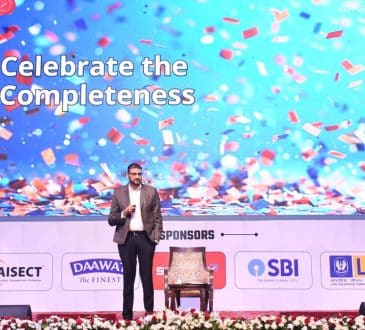Nine Steps Nonprofits Should Take Before Writing a Business Plan

Good planning is critical to success. But thorough planning is a complex task, and few organizations possess staff capable of producing disciplined, actionable plans. Professional consultants that nonprofits can typically afford may be only marginally more capable.
Even high priced consultants typically deliver long, complex documents and fancy slideshows that look impressive but end up accomplishing little. The reason: Little thought is given to the practical steps of how to pay for and carry out everything called for in the plan.
Then there’s the problem of how long it can take to reach consensus and implement a plan. By the time organizations have gotten input and consensus from all stakeholders, they may have spent many months or even years in the process. By then the world is a different place.
Not only do social impact plans need to be good, but they need to be completed and put into action in a timely manner. With that in mind, here are nine steps nonprofits can take before writing their business plans that will help break this difficult challenge into bite-sized pieces:
- Establish a Growth Mindset: This is a belief that intelligence, abilities, and talents are not fixed, but learnable — and most importantly, an optimistic stance that the organization can capture the resources it needs to thrive. One exercise that can help is to ask your team “What would we do with tons of money?” Imagine a big foundation has agreed to give your nonprofit all the money it needs — provided you tell them how you will spend the money. Then have everyone write down their recommendation to spend that pile of money. Typical answers to this exercise usually reveal modest dreams of growth. Explore the responses and discuss what they reveal about mindsets, attitudes, and cultural constraints toward growth.
- Choose Powerful Language: Once you establish how critical a growth mindset is, bring people together around a new set of language choices that create and support powerful, high-functioning organizations. Consider the difference between the terms “charity” and “social impact enterprise.” While charity evokes visions of thrift stores and soup kitchens, social impact enterprise implies a value-centered organization that uses sophisticated management practices. Even if the term is unfamiliar, it invites curiosity and discussion.
- Create Compelling, Actionable Mission and Vision Statements: Organizational planning usually starts with crafting mission and vision statements, yet too often these are long, ambiguous, and filled with jargon. To better define the mission, start by saying “We are solving the problem in this way.” Similarly, you can hone vision with the statement: “This is what complete success looks like in specific terms.” Help everyone understand that the mission is the problem being solved, and the vision is what ultimate success looks like.
- Define the Organization’s Value Proposition: This is a short, compelling statement of why your organization is best positioned to tackle the problem or issue, along with evidence of that capability, called “proof points.” If the venture is new or a startup, evidence may not exist. In that case, come up with a credible, research-backed program design you can test as a pilot.
- Define a BHAG: The term Big, Hairy Audacious Goal (originally coined by Jim Collins) describes the change the organization will deliver by a specific date. It provides built-in accountability that focuses internal teams and engages external stakeholders. A BHAG is a promise, not a guarantee. Assure your team no one will be punished if the organization doesn’t achieve the goal. Courage and optimism to make the attempt are all that is necessary at this stage. Remind them that most important people, those with resources, are only attracted to organizations with audacious goals.
- Define Your Impact and Growth Strategy: Strategy is a continuous guide to organizational choices and behaviors required to achieve success. It can be broken down into two types. Impact strategy describes what the organization does to deliver an improvement or solve a problem at the individual or service unit level. Growth strategy is what the organization does to expand the intervention or service.
- Draft Year 1 Initiatives: These spell out what major actions the organization will take in the coming year. They are the most immediate and important steps on the journey to achieving the BHAG. If, for instance, the mission is to build a certain number of affordable homes, year one initiatives might include acquiring property, hiring an architect, and sourcing building materials. Year one initiatives around growth typically involve building a sales and marketing team and instructure, such as “hire a chief investment/partnerships officer” or “convert fundraising events to donor-building trust and stewardship events.”
- Create Key Performance Indicators: No impact and growth strategy is worth the paper it’s printed on without measures of execution — KPIs. There are two types, leading and lagging. A lagging indicator is the desired outcome — the end result that is measurable in numbers, such as dollars raised, houses built, or people served. Leading indicators are the activities performed today to create the outcomes desired tomorrow.
- Create a Planning Framework: When you have board and staff input on each of the practices outlined above, the next step is to consolidate everything into a one-page planning framework. The planning framework provides a means to generate consensus in a way that is focused and concise. It can be expanded later into a complete business plan, and will make producing such a plan much easier.
The process of creating a planning framework will force your team to be focused and concise, and may bring up cultural or personality barriers that must be addressed and resolved. As CEO, you must be intentional about managing the change process to bring people along and ensure the new direction sticks. Don’t let the perfect be the enemy of the good. As you develop each step, move on when you have 80% confidence and consensus, and maintain a bias toward action and experimentation, rather than analysis and reflection.
Written by Donald Summers, Ed.M.
Have you read?
Most Innovative Countries in the World.
Countries by Average Wealth per Person.
Countries with the Highest Age Dependency Ratio.
Best Universities In The World.
Best Fashion Schools In The World.
Bring the best of the CEOWORLD magazine's global journalism to audiences in the United States and around the world. - Add CEOWORLD magazine to your Google News feed.
Follow CEOWORLD magazine headlines on: Google News, LinkedIn, Twitter, and Facebook.
Copyright 2025 The CEOWORLD magazine. All rights reserved. This material (and any extract from it) must not be copied, redistributed or placed on any website, without CEOWORLD magazine' prior written consent. For media queries, please contact: info@ceoworld.biz








